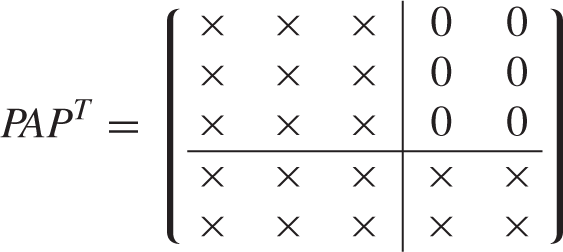6.8 Nonnegative Matrices
In many of the types of linear systems that occur in applications, the entries of the coefficient matrix represent nonnegative quantities. This section deals with the study of such matrices and some of their properties.
For an example of one of the applications of nonnegative matrices, we consider the Leontief input–output models.
As you have probably guessed, there is also a closed version of the Leontief input– output model. In the closed version, it is assumed that each industry must produce enough output to meet the input needs of only the other industries and itself. The open sector is ignored. Thus, in place of the system (1), we have
and we require that x be a positive solution. The existence of such an x in this case is a much deeper result than in the open version and requires some more advanced theorems.
Theorem 6.8.1
Perron’s Theorem
If A is a positive matrix, then A has a positive real eigenvalue r with the following properties:
r is a simple root of the characteristic equation.
r has a positive eigenvector x.
If λ is any other eigenvalue of A, then .
The Perron theorem may be thought of as a special case of a more general theorem due to Frobenius. The Frobenius theorem applies to irreducible nonnegative matrices.
Example 1
Let A be a matrix of the form
Let and . Then and whenever and . Therefore, A is reducible. If P is the permutation matrix formed by interchanging the third and fifth rows of the identity matrix I, then
and

In general, it can be shown that an matrix A is reducible if and only if there exists a permutation matrix P such that is a matrix of the form

where B and C are square matrices.
∎
Theorem 6.8.2
Frobenius Theorem
If A is an irreducible nonnegative matrix, then A has a positive real eigenvalue r with the following properties:
r has a positive eigenvector x.
If λ is any other eigenvalue of A, then . The eigenvalues with absolute value equal to r are all simple roots of the characteristic equation. Indeed, if there are m eigenvalues with absolute value equal to r, they must be of the form
The proof of this theorem is beyond the scope of the text. We refer the reader to Gantmacher [4, Vol. 2]. Perron’s theorem follows as a special case of the Frobenius theorem.
